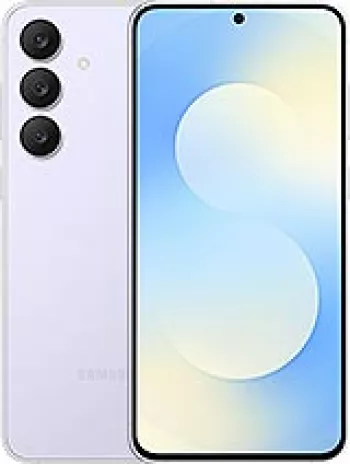
Introduction to Samsung D820
Launched in the fourth quarter of 2005, the Samsung D820 is a feature phone that showcases Samsung's engineering capabilities during the mid-2000s. While it has been discontinued, the device is remembered for its compact design and the unique features it brought to mobile telephony during its time. This article delves into the specifications, design, and technological aspects of the Samsung D820, providing a comprehensive overview of what made this device a distinct presence in the market.
Design and Build
The Samsung D820 sports a sleek clamshell design that was highly popular in the mid-2000s. Its dimensions are 95 x 51 x 15.2 mm, making it comfortably compact for easy handling. Weighing in at 99 grams, this device was light enough to carry around without much hassle. The device featured a Mini-SIM slot, standard for most mobile phones of that era.
Display
The device has a 2.1-inch TFT display, supporting 256K colors which was quite impressive for the time. With a resolution of 240 x 320 pixels and a 4:3 aspect ratio, the display density stands at approximately 190 pixels per inch (ppi), ensuring decent clarity for viewing text, images, and essential multimedia content.
Camera
Integral to the Samsung D820’s offering is its 1.3 MP main camera. The camera's standout feature is its 180-degree rotating lens, allowing users to take pictures from creative angles and even facilitate taking selfies, which were gaining popularity at the time. The camera supports CIF video recording, providing basic video recording capabilities.
Performance and Storage
Being a feature phone, the Samsung D820 runs on a proprietary operating system typical for feature phones as opposed to the advanced smartphone OSes seen today. It holds 73MB of internal memory, which was relatively ample for storing contacts, messages, and a few media files. The phone supports expandable storage via a dedicated microSD card slot, allowing for additional storage space for user media.
Battery Life
The device is powered by a removable Li-Ion 800 mAh battery. The battery life was sustainable for the feature phone's demands, offering up to 180 hours of stand-by time and up to 3 hours of talk time, which was aligned with user expectations at the time.
Network and Connectivity
The Samsung D820 utilizes GSM technology, supporting 2G bands across GSM 850/900/1800/1900. It supports GPRS and EDGE class 10 for data connectivity, enabling basic internet services and email capabilities. For wireless connectivity, Bluetooth 1.2 with A2DP support is present, providing audio streaming capabilities to compatible devices. However, it does not feature WLAN, GPS, or radio functionality.
Sound and Alerts
Audio features on the Samsung D820 include a loudspeaker with stereo sound and support for vibration alerts alongside downloadable polyphonic and MP3 ringtones. It, however, lacks the 3.5mm headphone jack, common in most feature phones back then.
Messaging and Browser Functionality
The device is equipped to handle SMS, EMS, MMS, and email messaging, which meets the communication needs. Its browser supports WAP 2.0/xHTML, allowing rudimentary web access.
Additional Features
Beyond the core specifications, the Samsung D820 includes language support for Java MIDP 2.0, facilitating the download and installation of Java-based applications and games. This added to its functionality outside the usual calling and messaging features.
Color Variants and Pricing
The Samsung D820 was available in several color options, including Noir Black, Blue Black, and Charcoal Gray, providing users with aesthetic choices. At its launch, it was priced at approximately EUR 110, placing it in the mid-tier category among feature phones of its time.
Conclusion
The Samsung D820, though discontinued, is a testament to the evolving nature of mobile technology. With its compact design, sturdy build, and reliable performance, it catered well to the consumer needs of the mid-2000s, bridging the gap between basic cellular phones and the smart capabilities of future generations.
Key Features of Samsung D820
- Supports GSM 850 / 900 / 1800 / 1900 networks
- Compact and lightweight design (99 g)
- 2.1-inch TFT display with 256K colors
- Expandable storage via microSD card slot
- 1.3 MP main camera with 180-degree rotating lens
- Stereo speakers for enhanced audio experience
- Bluetooth 1.2 with A2DP support
- Supports SMS, EMS, MMS, and Email messaging
- Removable Li-Ion 800 mAh battery for easy replacement
- Available in Noir Black, Blue Black, and Charcoal Gray
Disadvantages of Samsung D820
- Discontinued model, no longer supported or updated.
- Limited internal storage of only 73MB.
- Basic 1.3 MP main camera with no selfie camera.
- No Wi-Fi capability for internet access.
- Absence of GPS for navigation.
- Lacks radio functionality.
- No 3.5mm headphone jack for standard headphones.
- Small display size of 2.1 inches with a modest resolution.
- Older Bluetooth version (1.2) with limited capabilities.
- Short battery life with only up to 3 hours of talk time.
- Only supports USB 1.1, resulting in slower data transfer rates.

View Also
More Phones
All Rights Reserved +14266 Phones © Mobilawy 2025

























